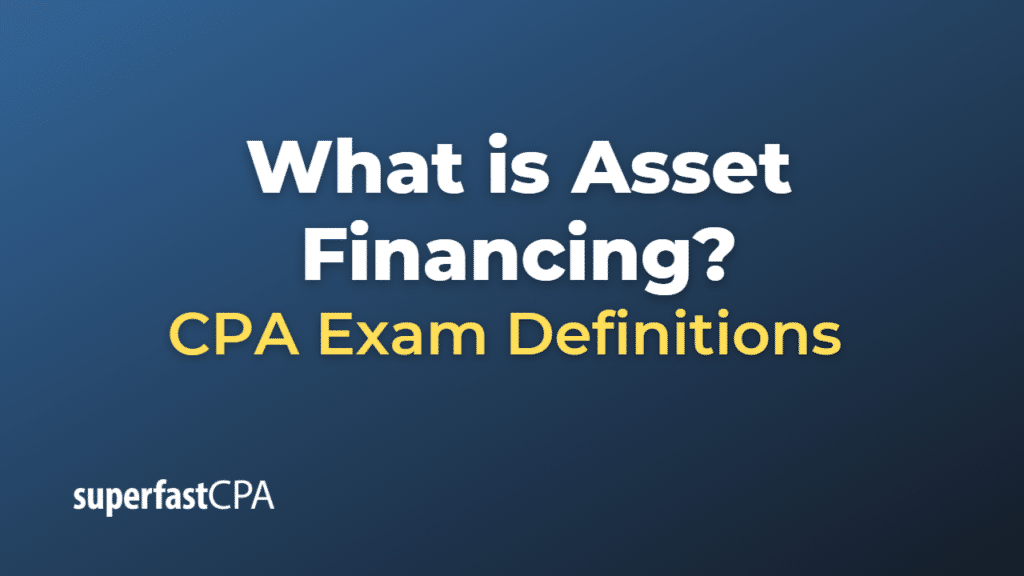Asset Financing
Asset financing refers to a type of financing in which a company uses its assets as collateral to secure a loan or lease. The assets used in this arrangement may include tangible assets, such as machinery, equipment, or real estate, as well as intangible assets, such as intellectual property or accounts receivable. Asset financing allows businesses to obtain funds without relying on traditional loans or issuing equity, thereby preserving cash flow and ownership structure.
There are several forms of asset financing, including:
- Asset-based lending: A loan secured by the company’s assets, such as inventory, accounts receivable, or machinery. The lender provides funds based on the value of the collateral, and the borrower is required to repay the loan with interest over time.
- Equipment leasing: A company leases equipment from a financing company for a specific period instead of purchasing it outright. At the end of the lease term, the company may have the option to purchase the equipment, renew the lease, or return the equipment.
- Sale-leaseback: A company sells its assets, such as real estate or equipment, to a financing company and then leases those assets back. This allows the company to access the equity tied up in its assets while still retaining the use of those assets.
- Factoring: A company sells its accounts receivable to a financing company (called a factor) at a discount. The factor takes responsibility for collecting the receivables and assumes the risk of non-payment. This provides the company with immediate cash flow without having to wait for customers to pay their invoices.
Asset financing can provide companies with additional financial flexibility, allowing them to invest in growth, manage cash flow, or meet short-term obligations. However, it may also involve higher financing costs and the risk of losing assets in the event of default.
Example of Asset Financing
Let’s take the example of a small manufacturing company that needs to purchase new machinery to expand its production capacity.
The company identifies a suitable machine that costs $100,000. However, it doesn’t have sufficient cash on hand to buy the equipment outright and doesn’t want to take out a traditional loan that could affect its cash flow or increase its debt burden.
Instead, the company decides to use asset financing in the form of equipment leasing. It approaches a financing company that specializes in equipment leasing and negotiates a lease agreement for the $100,000 machine. The financing company purchases the machine and leases it to the manufacturing company for a period of five years, with monthly lease payments of $2,000.
At the end of the lease term, the manufacturing company has the option to purchase the machine at its then-current market value, renew the lease for an additional period, or return the machine to the financing company and lease a newer model.
By using asset financing, the manufacturing company is able to acquire the necessary equipment to expand its production capacity without a significant upfront cash investment or taking on additional debt. This allows the company to preserve cash for other business needs, manage its cash flow more effectively, and potentially increase its profitability.













